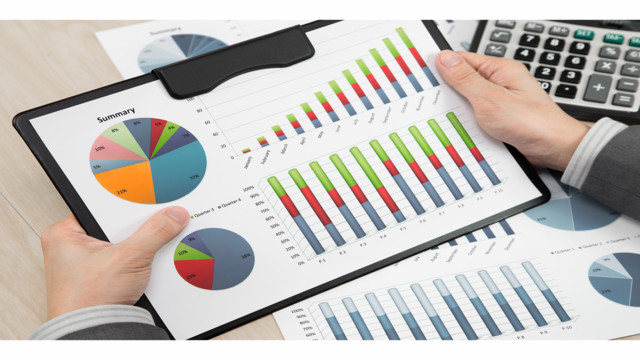Benefits
Shoemaker Syndrome: It’s Time for Firms to Automate Payments
Accounting firms that delay offering e-payment options to their clients are well behind the times, while firms that are not using proprietary, in-system payment tools are sacrificing efficiency.
Mar. 10, 2022

There is a proverbial saying that the shoemaker’s children always go barefoot – making the point that some professionals don’t apply their skills to benefit themselves.
Are you a shoemaker? Do you keep your clients’ books with meticulous accuracy, but find yourself always behind on routine billing and collections? Tracking and managing financial accounts, cash, billing and payments are the lifeblood of accounting and finance professionals, yet many firms still rely on manual processes to invoice and collect payments from clients.
Accounting firms have long relied on paper checks and manual processes to handle billing and invoicing, but as technology for practice management and billing continues to improve, firms are increasingly turning to automated payments, particularly with the rise of a remote and hybrid workforce. Automated payments offer many benefits for accounting firms – greater efficiency, faster billing processing, reduced DSO and faster collections – all contributing to a better bottom line. More importantly, automated billing offers a better client experience.
To achieve these improvements and get the greatest efficiency in your billing processes, firms should adopt a practice management platform that combines accounting features and automated payments as integrated steps in the same convenient system.
The Disconnect Between Billing and Payments
Some payment solutions available on the market are not integrated into your practice management or time and billing software. Using an automated payments program that is not integrated will increase workflow complexity and risk of error, as staff move between the billing environment and the invoicing/payments application to create, send and track digital invoices and payments.
A more successful approach for firms looking to make the move to automated payments is to choose an all-in-one practice management platform that combines automated payments and all your firm’s other accounting needs into one system. The right end-to-end system will not only bring seamless workflows to your payment processes, it will also support the unique features and compliance regulations that firms require. Following are a few of the benefits your firm can realize with an all-inclusive practice management and payments system.
Ease of Use
An all-in-one practice management platform designed for accounting firms will combine automated payments with all the other accounting features firms need in a single efficient and easy-to-use system. Users will not have to constantly switch between disparate systems, and there will also be cohesive training and support.
A Single Source of Truth
In an environment with multiple applications that are not integrated, it is possible to create redundancies or inaccuracies in scheduling or data entry. Look for an accounting practice management solution that will enable you to keep everything you need to run your practice, including contacts, project tracking, tax workflows, activity lists and billing information, in one place. Another benefit is unified metrics and reporting. An integrated online payment system allows your team to review transactions, AR aging and balance sheets anytime.
Compliance with Standards of Professional Conduct
Integrated practice management, billing and payments do a better job of managing recurring payments and fixed-fee and alternative payment agreements. While an accountant is not typically considered to be a fiduciary to clients, the AICPA Professional Code of Conduct embodies standards which are closely analogous to a fiduciary relationship – objectivity, accuracy, integrity, truthfulness and avoidance of conflicts of interest.
Improved Firm Efficiency
When practice management and payments work together, client and case files are clearly organized and up to date, billing is a breeze and payment processes are built into overall financial management workflows. This means that all client activity is managed in one place, from client intake to billing to reconciliation of your firm’s ledgers and financial reports.
When billing processes are more efficient and integrated, it is easier for clients to make payments, which translates into faster payments and increased cash flow.
A Better Client Experience
Accounting firm clients, like most consumers, prefer to pay via electronic means. They also appreciate flexibility in electronic payment methods. An automated payments process gives them timely visibility into new invoices and the means to simply click and pay via e-check or credit card.
The all-in-one practice management and automated payments system makes it possible for professionals to access data in real time from any browser. This enables accountants and staff to answer inquiries quickly and serve clients with confidence, knowing that you’re dealing with the latest version and the information you share is accurate. It also streamlines information flow and helps accountants make better-informed business decisions.
Be a Better Shoemaker
Accounting firms that delay offering e-payment options to their clients are well behind the times, while firms that are not using proprietary, in-system payment tools are sacrificing efficiency.
CPAs, accountants and fractional CFOs want to spend their time advising clients and keeping the clients’ financial house in order. Firms can set a great example for clients by automating their own internal processes and save hours of staff time spent on the manual processes of handling paperwork, preparing invoices and chasing down payments. Practice management that includes automated payments enables your firm to enhance client satisfaction, get paid faster, speed up cash flow and increase overall profitability.
=========
Tomas Suros is a technology advocate working at the intersection of IT and client consulting. With AbacusNext since 2004, he currently serves as global product marketing director, guiding firms through the process of identifying forward-facing technology options and ensuring the successful implementation of a tailored solution.
